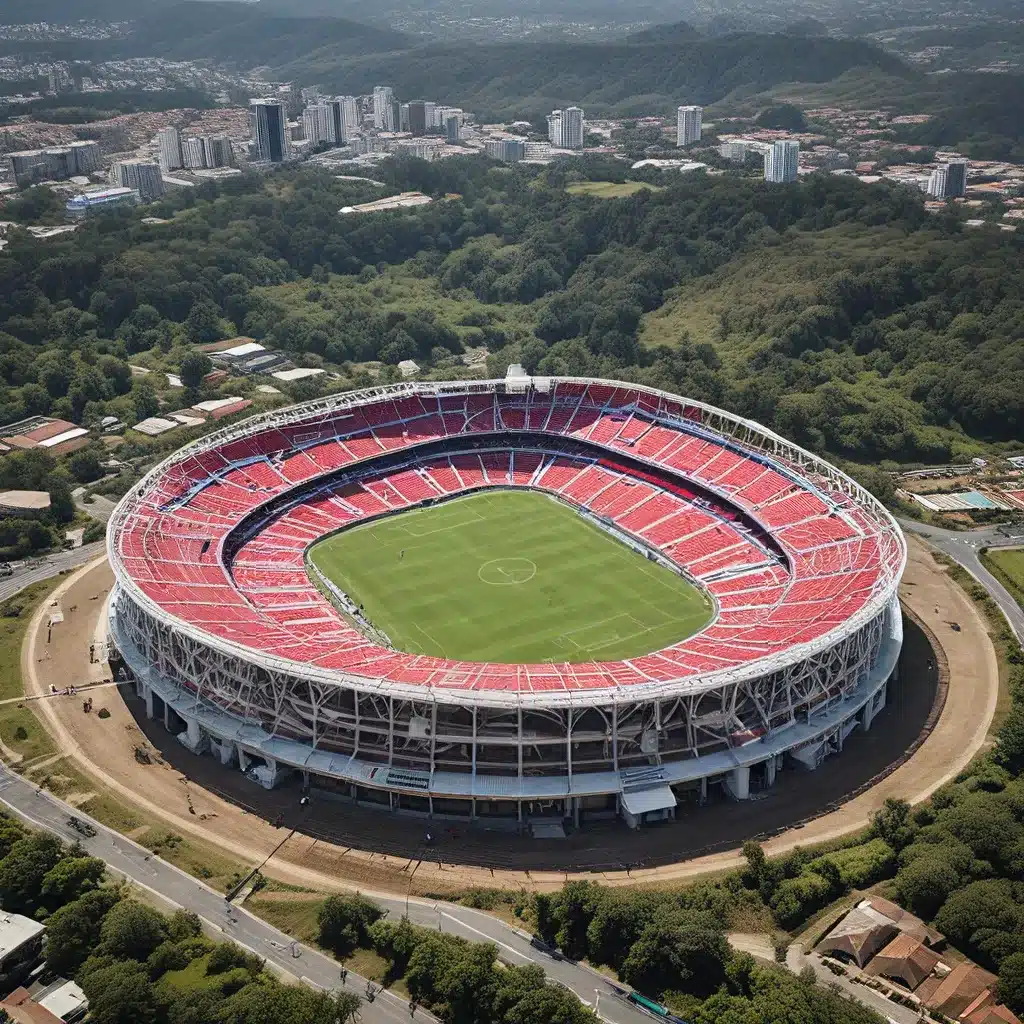
A Beacon of National Unity and Cultural Celebration
The Estadio Nacional de Costa Rica stands as a majestic symbol of Costa Rican national pride, a towering monument to the country’s vibrant sporting heritage and its unwavering spirit of community. Nestled in the heart of San José, this architectural marvel serves as a sanctuary for the nation’s beloved pastime – football (soccer) – while also hosting a diverse array of cultural events that captivate audiences from across the country.
Inaugurated in 2011, the Estadio Nacional de Costa Rica was a gift from the Chinese government to the Costa Rican people, a testament to the growing international ties between the two nations. The stadium’s striking design, resembling a grand crown or a futuristic spacecraft, has become an iconic landmark, dominating the city’s skyline and serving as a beacon of national unity.
A Versatile Venue for Sports and Cultural Celebrations
Beyond its primary role as a football stadium, the Estadio Nacional has emerged as a versatile venue for a wide array of cultural events. In 2011, the stadium hosted a memorable concert that bid farewell to the beloved Costa Rican musician Fidel Gamboa, the visionary behind the acclaimed folk group Malpaís. The event drew over 30,000 adoring fans, who gathered to honor Gamboa’s musical legacy and the rich tapestry of Costa Rican culture.
The stadium has also welcomed international superstars, such as Colombian singer Shakira, who performed to packed crowds during the stadium’s inaugural celebrations. These high-profile concerts not only entertain the masses but also serve as a testament to the Estadio Nacional’s status as a premier venue for cultural expression and national unity.
A Contested Symbol of Progress and Preservation
While the Estadio Nacional has become a point of pride for many Costa Ricans, its construction and operation have not been without controversy. The decision to pay international artists more than local musicians during the stadium’s inaugural events sparked outrage, with the popular group Malpaís refusing to perform in protest. This incident highlighted the ongoing debate surrounding the balance between supporting national artists and the pressures of globalization.
Similarly, the stadium’s construction, funded by the Chinese government, has raised concerns among some Costa Ricans about the potential social and environmental costs of the country’s growing ties with the international superpower. Activists have staged demonstrations outside the stadium, questioning the priorities of the government and the sustainability of such large-scale infrastructure projects.
A Beacon of Hope and Inspiration
Despite the occasional controversies, the Estadio Nacional de Costa Rica remains a cherished gathering place for the Costa Rican people, a symbol of their nation’s resilience, creativity, and commitment to community. Whether it’s the roar of the crowd during a football match, the thunderous applause of a cultural performance, or the quiet contemplation of the stadium’s architectural grandeur, the Estadio Nacional has become a touchstone for the Costa Rican spirit.
As the country continues to grapple with the challenges of development, the Estadio Nacional stands as a reminder of the power of collective celebration and the enduring allure of the nation’s rich cultural legacy. It is a testament to the belief that, even in the face of change and uncertainty, the human spirit can find solace and inspiration in the shared experiences that bring a community together.
For those who visit the Estadio Nacional, whether to witness a thrilling match or to immerse themselves in the rhythms of Costa Rican music and dance, the experience is sure to be one that lingers long in the memory, a testament to the enduring power of this magnificent stadium to captivate and unite. As the country looks to the future, the Estadio Nacional will undoubtedly continue to serve as a beacon of hope and a symbol of the nation’s unwavering commitment to its cultural identity and the pursuit of shared experiences that transcend the divides of modern life.

